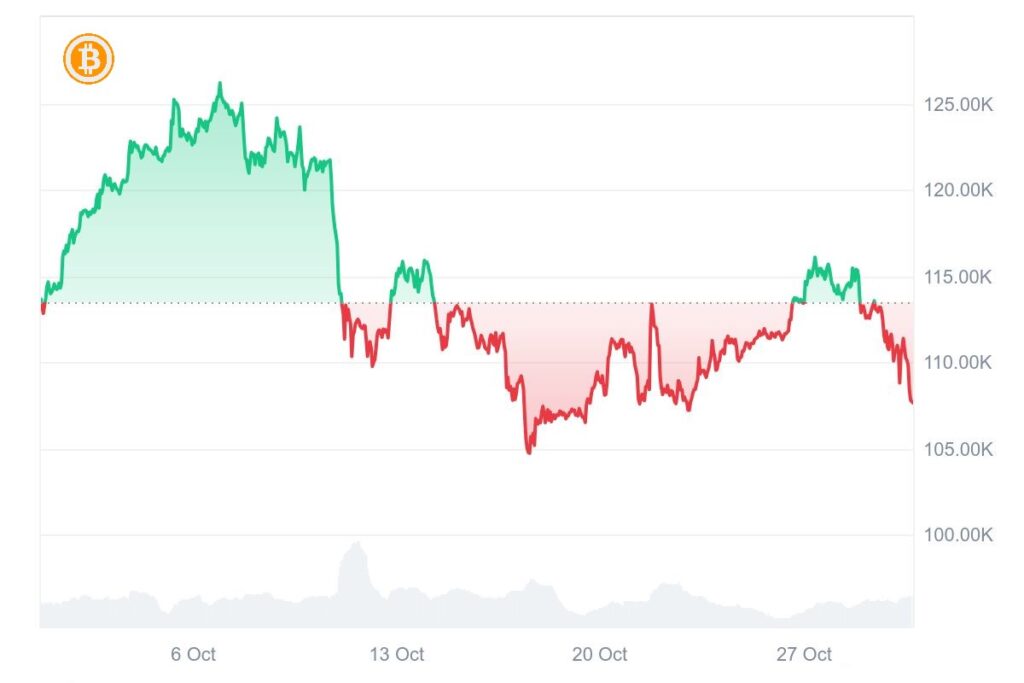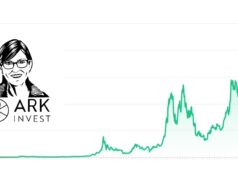Despite a highly anticipated trade truce between the U.S. and China and a fresh Federal Reserve rate cut, Bitcoin and the broader crypto market are still struggling to regain their footing. The reaction to the Fed rate cut turned unexpectedly negative, with traders selling into strength instead of extending the rally many had priced in. After a brutal start to October that saw a historic $19 billion liquidation event, the largest in crypto history, markets have yet to recover. The decline exposes deep fragility in sentiment and positioning.
The result is one of the most confusing and challenging months of 2025 for investors. It reflects a mix of macro optimism, structural weakness, and fading confidence that good news can reverse crypto’s volatility spiral.
Why the Trump–Xi Deal and Fed Rate Cut Matter
The Trump–Xi trade deal is being hailed as a diplomatic breakthrough. Both leaders agreed to de-escalate tariff tensions and cooperate on supply-chain resilience. Beijing pledged modest agricultural imports, while Washington signaled an easing of certain tech restrictions.
At the same time, the Federal Reserve cut its benchmark rate by 25 basis points, the first reduction since the summer, to support slowing growth. However, Federal Reserve Chair Jerome Powell tempered market optimism by warning that a December rate cut is “not a foregone conclusion.” He stressed that policy is not on a preset course, given divided FOMC views and data gaps caused by the government shutdown.
A further reduction in the policy rate at the December meeting is not a foregone conclusion, far from it. There were strongly different views today. And the takeaway from that is that we haven’t made a decision about December.
Jerome Powell, Federal Reserve Chair
Essentially, analysts expected Bitcoin’s price reaction to follow earlier easing cycles: higher risk appetite, renewed institutional inflows, and relief across risk assets. Yet Bitcoin fell nearly 4 percent, while Ethereum, Solana, and other majors extend losses. The market is still nursing its losses from the earlier crash.

October’s Whiplash: From Tariff Shock to Historic Liquidations
The real damage came earlier in the month. On October 10–11, President Trump stunned markets by announcing a 100 percent tariff on all Chinese tech imports and tighter export controls on semiconductors. The move reignited trade-war fears and triggered panic across global markets.
Crypto, already heavily leveraged, suffered the worst. Within 24 hours, over $19 billion in positions were wiped out, the largest single-day liquidation in crypto history. The event impacted 1.6 million traders and dwarfed past crises such as FTX and Terra Luna.
Bitcoin plunged 18 percent, dropping from an October 6 high of $126,000 to below $105,000. Leading altcoins like Solana, XRP, and Dogecoin also suffered steep double-digit losses as liquidity vanished and traders rushed to unwind positions. Meanwhile, ETF inflows reversed as institutions cashed out, erasing about $370 billion from total market value.
Consequently, this forced liquidation wave created a structural dent in market liquidity. By the time the Fed cut rates and the Trump–Xi trade deal was signed later in the month, traders had already de-risked. ETFs are still selling, and the crypto market sell-off continues as investors use every bounce to exit positions.
Trader Reaction: Crypto Futures in Flux
Following the macro announcements, Bitcoin’s price reaction becomes a textbook “sell-the-news” event. Futures funding rates turned negative across major exchanges, showing that bearish sentiment is taking hold.
Profit-taking and margin calls drove open interest down to its lowest point in six weeks. As one derivatives analyst notes, “Everyone was expecting a recovery rally, but the market is still shell-shocked from the earlier liquidation wave.” Consequently, hesitation to rebuild exposure carries through this so-called good-news week.
Macro Factors Still Weigh on Crypto
Beyond the technical resets, deeper macro issues persist. While the Trump–Xi trade deal softens rhetoric, it fails to resolve disputes over technology and intellectual property.
Meanwhile, Powell’s cautious stance, emphasizing uncertainty about future cuts, undermines hopes of a prolonged easing cycle. Analysts highlight that how Fed policy affects crypto prices depends on clarity. Bitcoin tends to thrive on clear liquidity expansion, not ambiguity.
In parallel, rising bond yields and sticky inflation expectations cap enthusiasm. The Crypto Fear & Greed Index dipped into “fear” territory several times in October, and volatility continues to climb.
Investors asking why Bitcoin is down after the Fed rate cut are discovering that mixed central-bank signals, combined with a fragile derivatives landscape, keep confidence muted.
Market Outlook: Recovery Scenarios and Risks
Analysts remain divided on whether the worst is over. On-chain data shows accumulation zones near $105,000, suggesting some long-term holders are stepping in. Yet institutional ETF flows stay negative.
The Bitcoin price forecast Q4 2025 varies widely. JPMorgan expects consolidation below $115,000, while others see upside potential if liquidity improves. For now, futures open interest remains subdued, indicating that leverage has been flushed out but conviction has yet to return.
Ultimately, stabilization will require steady inflows and a clearer macro narrative, especially a Fed stance that supports sustained risk-taking.
Lessons from October’s “Cursed” Crypto Month
October 2025 is shaping up as the month when both bad and good news fail to help. The early tariff shock exposed how fragile leverage structures have become. Later, the Federal Reserve rate cut and the Trump–Xi deal show that positive headlines alone cannot repair sentiment.
For traders, the key takeaway is caution. When optimism meets structural stress, even favorable news can trigger a crypto market sell-off. The recent weeks prove that the crypto market’s biggest threat is not necessarily policy, but overconfidence amid volatility.
As Q4 unfolds, investors are watching ETF inflows, liquidity recovery, and the Fed’s next signals closely. In such a reactive market, survival depends less on timing headlines and more on navigating the turbulent space between them.
Readers’ frequently asked questions
Why is Bitcoin down after the Fed rate cut?
Markets had already priced in the 25-basis-point rate reduction, so when the decision arrived without a surprise, traders sold the news. Fed Chair Jerome Powell’s cautious tone about future cuts added uncertainty, leading to a muted Bitcoin reaction to the Fed’s rate cut.
How does Fed policy affect crypto prices?
Lower interest rates generally increase liquidity and risk appetite, which can boost crypto valuations. However, when policy guidance is mixed or inflation remains high, traders tend to reduce exposure to volatile assets. The latest meeting shows that how Fed policy affects crypto prices depends on clarity and market confidence, not just rate direction.
What could trigger a Bitcoin recovery in Q4 2025?
Analysts point to three key catalysts: a decisive shift toward dovish Fed communication, renewed institutional inflows into ETFs, and stabilization of derivatives funding rates. If those align, Bitcoin’s momentum could return. Until then, markets remain sensitive to macro headlines and volatility spikes.
What Is In It For You? Action items you might want to consider
Tighten risk guardrails for heightened volatility
Right now, treat every bounce as suspect until trend confirmation. Reduce leverage, cap position sizes, and predefine stop-loss/invalidations instead of reacting intraday. Separate trading from investing: keep long-term allocations ring-fenced so tactical trades don’t force sales at lows.
Track stability signals: ETF flows, funding rates, open interest
Watch for a shift from persistent ETF outflows to net inflows, funding rates moving sustainably back to neutral/positive, and open interest rebuilding without spikes in liquidations. A cluster of these signals often precedes a steadier base.
Calendar key macro catalysts and prepare scenarios
Log upcoming Fed communications, CPI and jobs prints, and major China–U.S. trade headlines. For each event, set “if-then” playbooks (entries, trims, hedges) beforehand to avoid chasing volatility. Reassess plans if liquidity thins or spreads widen ahead of data drops.










